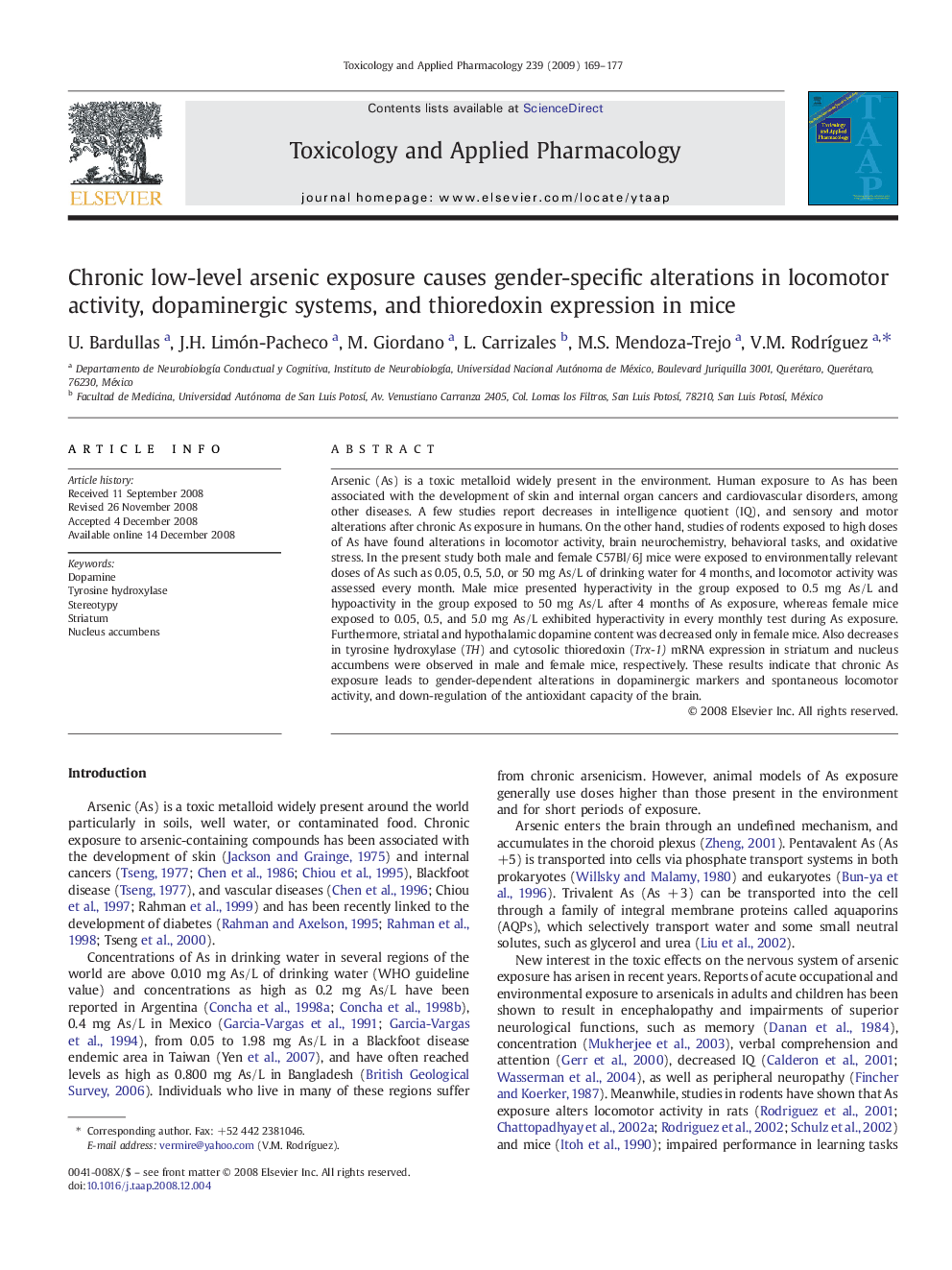| Article ID | Journal | Published Year | Pages | File Type |
|---|---|---|---|---|
| 5846946 | Toxicology and Applied Pharmacology | 2009 | 9 Pages |
Abstract
Arsenic (As) is a toxic metalloid widely present in the environment. Human exposure to As has been associated with the development of skin and internal organ cancers and cardiovascular disorders, among other diseases. A few studies report decreases in intelligence quotient (IQ), and sensory and motor alterations after chronic As exposure in humans. On the other hand, studies of rodents exposed to high doses of As have found alterations in locomotor activity, brain neurochemistry, behavioral tasks, and oxidative stress. In the present study both male and female C57Bl/6J mice were exposed to environmentally relevant doses of As such as 0.05, 0.5, 5.0, or 50Â mg As/L of drinking water for 4Â months, and locomotor activity was assessed every month. Male mice presented hyperactivity in the group exposed to 0.5Â mg As/L and hypoactivity in the group exposed to 50Â mg As/L after 4Â months of As exposure, whereas female mice exposed to 0.05, 0.5, and 5.0Â mg As/L exhibited hyperactivity in every monthly test during As exposure. Furthermore, striatal and hypothalamic dopamine content was decreased only in female mice. Also decreases in tyrosine hydroxylase (TH) and cytosolic thioredoxin (Trx-1) mRNA expression in striatum and nucleus accumbens were observed in male and female mice, respectively. These results indicate that chronic As exposure leads to gender-dependent alterations in dopaminergic markers and spontaneous locomotor activity, and down-regulation of the antioxidant capacity of the brain.
Related Topics
Life Sciences
Environmental Science
Health, Toxicology and Mutagenesis
Authors
U. Bardullas, J.H. Limón-Pacheco, M. Giordano, L. Carrizales, M.S. Mendoza-Trejo, V.M. RodrÃguez,
